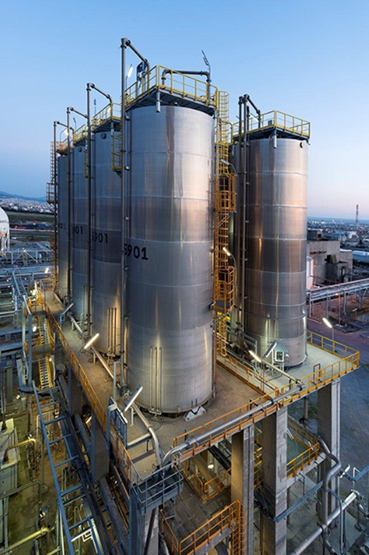CaSToRC is a partner, and has been a partner in the following ongoing and past EU and RIF projects.
Ongoing EU Projects
AQTIVATE |
 |
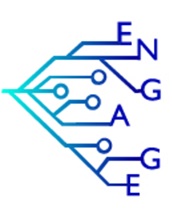 |
AQTIVATE Details
|
BEATS Details
|
ENGAGE Details
|
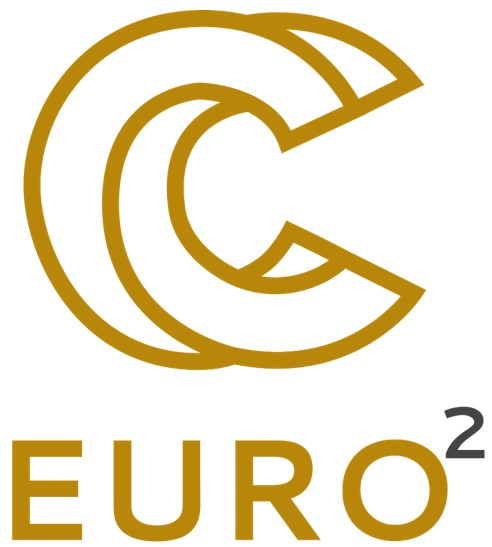 |
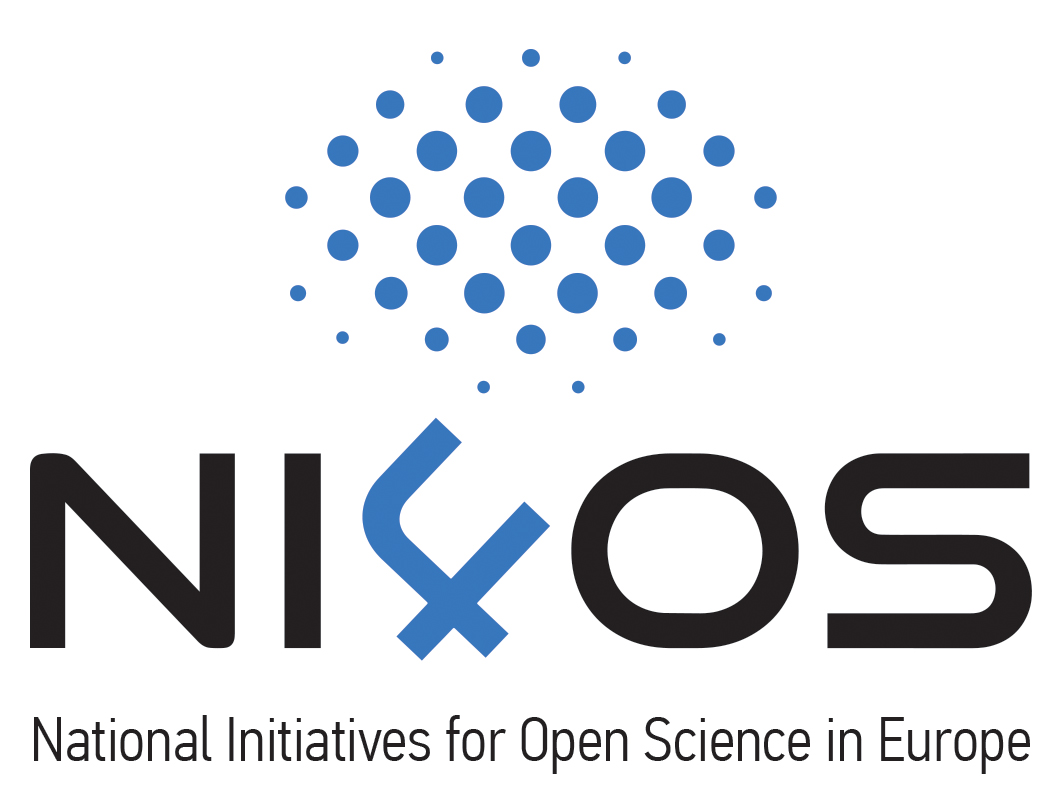 |
QUEST |
EuroCC2 Details
|
NI4OS-Europe Details |
QUEST Details
|
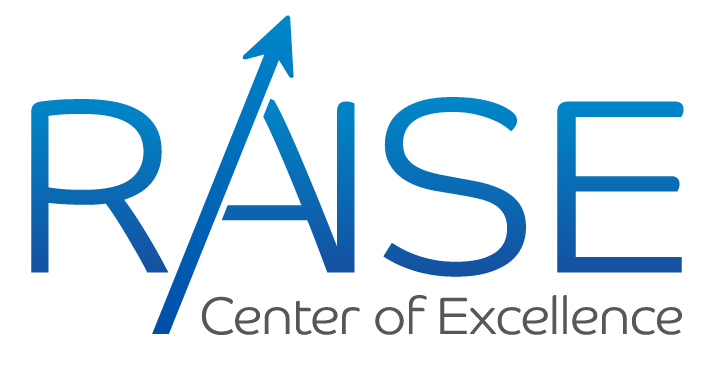 |
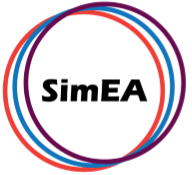 |
 |
RAISE Details
|
SimEA-ERA CHAIR Details
|
STIMULATE Details
|
Ongoing RIF Projects
3D-Nucleon
|
CODETHREE
|
EMBED-AI
|
FAST
|
NextQCD
|
NiceQuarks
|
pRMSnEDM
|
QC4LGT
|
Past RIF Projects
3D-Nucleon
Project informationStart date: 1 April 2022 End date: 31 March 2024
|
The rich structure of hadrons can be quantitatively studied using the theory of the strong interaction, Quantum Chromodynamics (QCD). Being a non-perturbative quantum field theory, the only ab initio approach known today is to discretize QCD on a 4-dimensional Euclidean space-time lattice, a formalism known as lattice QCD, and perform a numerical evaluation via Markov chain Monte Carlo. Parton distribution functions (PDFs), generalized parton distributions (GPDs), transverse momentum dependent parton distributions (TMDs), and distribution amplitudes (DAs) are quantities that characterize the structure of hadrons and for more than half a century there has been a joint experimental and theoretical effort to determine them. However, access to the distributions themselves using lattice QCD was not possible until X. Ji proposed a new approach to extract quasi distributions and then match them to obtain the distributions of interest. In this project we will use this approach to compute PDFs taking for the first time the continuum limit using three ensembles of twisted fermions simulated with approximately physical value of the up, down, strange and charm quark masses (physical point). We will also perform a flavor decomposition of the PDFs computing the individual quark and gluon PDFs using an ensemble of twisted mass fermion at the physical point. We will also expand the formalism to compute GPDs directly at the physical point. Research on new algorithms able to scale to exascale incorporating also machine learning will be investigated.
AQTIVATE
Project informationStart date: 1 March 2023 End date: 28 February 2027
|
AQTIVATE Website |
The joint doctoral project “Advanced computing, QuanTum algorIthms and data-driVen Approaches for science, Technology and Engineering (AQTIVATE)” will deliver an interdisciplinary training program for fifteen fellows who will learn to utilise high performance computing, develop scalable algorithms and machine learning approaches, and explore quantum computing for research projects from physics, engineering and biology. AQTIVATE engages nine degree awarding institutions (DAIs) and four major research centres, including four national supercomputing centres in Cyprus, Germany, Italy and Sweden, one non-degree higher-educational institution, five companies as associated partners, NVIDIA participating through its research labs at two supercomputing centres, and IBM to join as a future associate partner. AQTIVATE will deliver joint degrees between at least two DAIs. The training program and the research projects of the fellows are designed to be interdisciplinary and they all include a placement in industry and/or supercomputing center, exposing the fellows to different training and work settings. By integrating interdisciplinary methodologies and engaging leading experts from different fields across Europe, AQTIVATE aims to deliver an innovative doctoral program that goes beyond what can be delivered by a standard university curriculum. This combination of formal and hands-on training, coupled with an exposure to different training environments, aspires to produce graduates with excellent career prospects both in academia and industry, and who will be ideally positioned to develop disruptive approaches in their respective scientific fields. AQTIVATE responds to the advancements and investments in supercomputing infrastructure and quantum computing systems and the need for developing new algorithms and software, delivering the much needed human capital that is essential to ensure Europe’s leadership in exploiting digital technologies for research and innovation.
BEATS
Project informationStart date: 1 January 2019 End date: 30 June 2023
|
 Beats Website |
The project builds upon the OPEN SESAME project, and has the following key objectives:
- Develop and consolidate the scientific case and build up a science community, paying particular attention to the R&D and technology needs of the SESAME Members and beyond. Today, there is already significant interest from the Cultural Heritage and Archaeology community. Applications in Environmental and Materials Sciences, with links to industries in the region, shall also be explored
- Foster collaborations among the project partners in all aspects of the technical work to ensure that a comprehensive transfer of knowledge to SESAME staff is accomplished within the lifetime of the project
- Design, procure, construct, and commission a beam line for hard X-ray full-field tomography at SESAME
- Address the issue of sustainability of operation by preparing medium- to long-term funding scenarios for the tomography beamline and the facility.
CODETHREE
Project informationStart date: 1 April 2022 End date: 31 March 2024
|
Project description
The motion of a liquid droplet over a solid surface is a process that is commonly observed, for instance, with water dew on plant leaves or rain drops on a car's windshield. These scenarios are incredibly easy to visualise, yet, they are inherently complicated to study due to the competition of effects that operate across multiple scales and in the vicinity of the solid/liquid/vapour contact line. The understanding of such phenomena is crucial for the development of many technologies, such as within self-cleaning surfaces, DNA analysis, printing applications, hydrogen fuel cells, desalination and water harvesting systems for arid regions across the planet. Many of these technologies are developed based on intuition derived from an amalgamation of laboratory experiments, mathematical modelling, and computer simulations. Although impressive progress has been made in both software/algorithms and hardware, computer simulations may require days to complete on supercomputers, even when investigating relatively simple cases. The combination of mathematical and data-driven modelling approaches can constitute an effective tool for the development of low-order, surrogate models, as a means to mitigate the computing requirements, and, importantly, to enhance our understanding of the key physics that drive droplet motion. In this project, the synergies between applied mathematical analysis, data-driven modelling approaches and large-scale simulations will be explored for wetting phenomena. The development of novel modelling and computational tools in the form of open-source software will allow us to enhance our fundamental understanding of how to control droplet transport in complex environments, to investigate several industrially relevant scenarios, aspiring to contribute towards a more cost-effective development of new technologies and the optimisation of existing ones.
Objectives
Through synergistic physics-based and/or data-informed modelling approaches, the key objectives of the project are:
- Develop surrogate models for isolated droplets to be used as replacements for expensive direct numerical simulations
- Assess and possibly extend regimes of applicability of long-wave models, which are often used for simulations of thin droplets
- Pursue parametric studies for uncovering optimal mechanisms for droplet transport.
A number of prototypical scenarios will be considered, and include sessile, partially wetting droplets on heterogeneous surfaces and in the presence of body forces, electric fields, thermal effects. The team for CODETHREE consists of researchers with expertise in applied mathematical analysis, large scale computing and fluid dynamics from The Cyprus Institute, Imperial College London and the Aristotle University of Thessaloniki.
Cy-Tera
Project informationStart date: 31 March 2011 End date: 30 June 2016
|
 High Performance Computing Facility Website |
CaSToRC, motivated by the lack of computational facilities in the Eastern Mediterranean region, secured a €1.1 million strategic infrastructure project in 2011, to develop a national computational facility similar to the ones that most European countries have established decades ago.
With the funding provided through this project, the High Performance Computing Facility was inaugurated in 2012, with the installation of Cy-Tera, the largest open-access supercomputer in the region at that time. The mission of the High Performance Computing Facility is to provide compute and data resources to the research community of Cyprus as well as the Eastern Mediterranean region and to be established as the national supercomputing facility.
In addition, the CaSToRC and the facility provide high-level support and training for scientists in the region, extensive data-storage and analysis capabilities as well as access to Cloud resources. Access to the facility is free and open to all scientists in the Eastern Mediterranean and subject to a peer-review process.
DEEP
Project informationStart date: 1 December 2011 End date: 31 August 2015
|
 DEEP Project website |
DEEP is a research project developing a novel architecture for next-generation supercomputers. The EMAC model was one of six pilot applications selected to investigate and demonstrate the benefits of combining hardware, system software and the programming model to leap beyond the limits of Amdahl’s Law.
During the project EMAC was highly optimized, acted as driver for co-design leading to the final realization of hardware and software in the project, and served to identify the main features of applications that most benefit from the DEEP concept.
Delphi Consortium
The Delphi Consortium, founded in 1982 by professor Guus Berkhout, and currently directed by Dr. Eric Verschuur, provides participating companies insight into the world of the latest technological opportunities in the field of advanced acquisition, closed-loop, full wavefield seismic imaging and high-resolution characterization of target areas. The Delft research group focuses on the major bottlenecks that all companies have in common. Therefore, the research is fundamental and forward-looking (‘strategic fundamental’) and does not aim at solving specific problems of individual companies.
The Department of Imaging Physics of the University of Delft focuses on developing novel instruments and imaging technologies. The research products push existing boundaries in terms of spatial resolution, temporal resolution, and information/data throughput. The department pioneers in developing advanced methodologies of computational imaging, combining cleverly designed imaging systems and sophisticated post-processing algorithms. This allows access to otherwise invisible levels of information, which become available through dedicated computational post-processing of raw image data. These breakthroughs led to extensive research collaborations with industry within the Netherlands and Europe.
The outputs of the research teams and collaborators are consolidated in the Delphi consortium; whose aim is to develop novel tools in geo-imaging technology for the geo-energy industry. Specifically, research is pursued in developing algorithms in the fields of acquisition and pre-processing seismic data, resolving multiple scattering events in seismic imaging, integrating full wavefield velocity estimation, as well as in borehole geophysics, reservoir characterization and monitoring. Today, the Delphi research program is sponsored by approximately 30 major national and international oil and gas companies, including service providers. As the energy sector seeks cost-effective and environmentally responsible ways to find and develop oil and gas fields, there is also greater reliance on high performance computing to extract valuable insights from seismic data, as well as to accurately simulate the complex processes that govern the flow of oil, water and gas in reservoirs.
EMBED-AI
Project information
The “EMBED-AI” project was funded by RIF, had 1 year duration and was a collaboration between Hyperion Systems Engineering Ltd. (www.hyperionsystems.net) and The Cyprus Institute.
The goal of this project was to develop machine learning algorithms to predict the quality of material during the polymer production process in real time, in effect creating virtual analysis instruments (soft sensors) to monitor material quality parameters in real-time. The algorithms used time series historical data taken from the plant’s instrumentation as input for training and prediction. These algorithms were integrated with HYPPOS which provides the raw data for the algorithms and manages the predictions while tracking the quality and location of the produced polymer.
ObjectiveTo increase the benefits achieved through the online operation of HYPPOS, specifically via quality predictions in real-time ChallengeTo overcome the lack of installed instrumentation we developed appropriate Machine Learning (ML) based algorithms to implement soft-sensors. MethodsUsing the soft sensors to enhance the predictive power of solutions by identifying off-spec material in real-time without the need for specialized online analyzers (instrumentation) Case Study
General Project Profile
|
|
The project is implemented under the programme of social cohesion “THALIA 2021-2027” co-funded by the European Union, through Research and Innovation Foundation.

ENGAGE
Project informationStart date: 1 January 2022 End date: 31 December 2026
|

ENGAGE Website |
The program “Enabling the next generation of computational physicists and engineers” (ENGAGE) will train 20 Early Stage Researchers (ESRs) to use advanced computer technologies and methodologies for scientific discovery and innovation. The Cyprus Institute is the beneficiary of ENGAGE, having established an interdisciplinary PhD program in Computational Sciences. ENGAGE pools together leading experts from major research centers and from some of Europe's best Universities to train the ESRs in high performance computing (HPC), data science approaches such as machine and deep learning (ML), and quantum computing (QC) and to apply them for solving problems from physics and engineering. The ESRs will learn to use mathematical modeling, to design scalable algorithms, to understand computer architectures and the principles of QC, and to use neural and tensor networks to analyze and extract information from large complex data sets obtained in high energy experiments and from synchrotron light facilities. They will experience different research environments via secondments to universities and to experimental and computational facilities as well as to industry. They will be trained to present their results and hold scientific discussions with researchers from different thematic domains, all of whom share common cross-disciplinary competencies in the pursuit of complex problems, which aim to advance our understanding of nature and to lead to innovative applications. The interdisciplinary program ENGAGE combines the expertise of researchers from institutions across Europe, from Cyprus, Greece and Italy to Germany and France as well as from SESAME, the Middle East's only major experimental synchrotron light facility. ENGAGE responds to the rapid developments in HPC, ML, and the emerging field of QC that have the power to transform the way research is carried out across disciplines. These developments require researchers with well-rounded training, that ENGAGE aspires to deliver.
Energy Efficient Graphics Algorithms for Mobile Devices
Project informationStart date: 2 October 2013 End date: 1 April 2015
|
Software applications that support 3D content and advanced imaging capabilities have become critical aspects of mobile devices (e.g. smart phones, tablet computers, etc.), hence the need to improve their energy-saving capabilities. While significant achievements are noted in hardware architecture, there is no corresponding progress in energy-saving software, particularly in 3D applications. This project developed energy aware techniques that support 3D multimedia applications on existing mobile devices, thus lengthening their duration of use. Complex and demanding multimedia applications face significant technological challenges when they "run" on mobile devices, where energy is limited. Indeed, the trend today wants the capabilities of batteries to increase at a much slower rate than the energy requirements of mobile applications, especially taking into account the level of complexity and the ever increasing demands of multimedia applications. Energy efficiency is a major priority for mobile devices, as they are normally powered by batteries, i.e. they have limited energy sources. The mobile industry, one of the fastest evolving, is looking for ways to drastically reduce energy consumption in these devices. For example, a liquid crystal display (LCD) consumes up to 50% of the total energy required by a mobile device, which shows that on-screen energy savings could prove preferable to improvements to components (e.g. CPU). The main concern of this project is the research and development of methods that optimize energy efficiency, taking into account both hardware and software, as well as the user. Our methodology includes identifying software elements that facilitate the application of energy-informed graphics algorithms to mobile devices. Of particular interest will be the energy saving on the screen, since it consumes the most energy. To achieve this, we will exploit the characteristics of the Human Visual System in algorithms performance in order to meet the energy constraints imposed by the existing hardware architecture. Our aim is also to use algorithms that are naturally progressive and which will allow us to reduce/increase the quality of image on demand. In addition, we will explore the possibility of minimising energy consumption by balancing the computational load between the CPU and the Graphics Processing Unit (GPU), depending on the algorithmic requirements. This can be achieved by rigorous analysis of the characteristics of the material, taking advantage in parallel the human visual perception.
EuroCC
Project informationStart date: 1 September 2020 End date: 31 December 2022
|
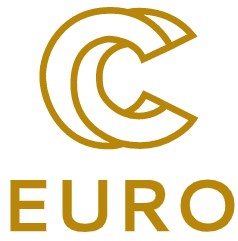
EUROCC Website |
Within the EuroCC project under the European Union’s Horizon 2020 (H2020), participating countries are tasked with establishing a single National Competence Centre (NCC) in the area of high-performance computing (HPC) in their respective countries. These NCCs will coordinate activities in all HPC-related fields at the national level and serve as a contact point for customers from industry, science, (future) HPC experts, and the general public alike. The EuroCC project is funded 50 percent through H2020 (EuroHPC Joint Undertaking [JU]) and 50 percent through national funding programs within the partner countries.
EuroCC2
Project informationStart date: 1 January 2023 End date: 31 December 2025
|

EUROCC2 Website |
The mission of EuroCC 2 is to continue the establishment of a network of National Centres of Competence (NCC) in the most efficient way, while continuing to address the differences in the maturity of HPC deployment in Europe, for which improvement has already been noted. Therefore, in addition to high-level management to monitor progress in the NCCs’ development, the main task of the overall activity is to support national centres in setting up their individual operational frameworks, while accessing and making the most of the experience and expertise currently available at national and European level. To support this, EuroCC 2 will work closely with a coordination and support action to be funded under DIGITAL-EUROHPC-JU-2022-NCC-01-02. A core team of EuroCC 2 applicants will also participate in the adapted continuation of the CASTIEL CSA (CASTIEL 2), which will be tailored to the needs of the EuroCC (2) NCCs and this time will also involve the Centres of Excellence. Our main goal is to drive collaboration, exchange of best practices and knowledge at the European level and to accelerate the improvement of national and thus European capabilities.
Funded by the European Union. This work has received funding from the European High Performance Computing Joint Undertaking (JU) and Germany, Bulgaria, Austria, Croatia, Cyprus (co-funded by the EU within the framework of the Cohesion Policy Programme “THALIA 2021-2027”), Czech Republic, Denmark, Estonia, Finland, Greece, Hungary, Ireland, Italy, Lithuania, Latvia, Poland, Portugal, Romania, Slovenia, Spain, Sweden, France, Netherlands, Belgium, Luxembourg, Slovakia, Norway, Türkiye, Republic of North Macedonia, Iceland, Montenegro, Serbia under grant agreement No 101101903.
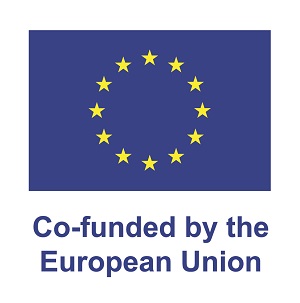
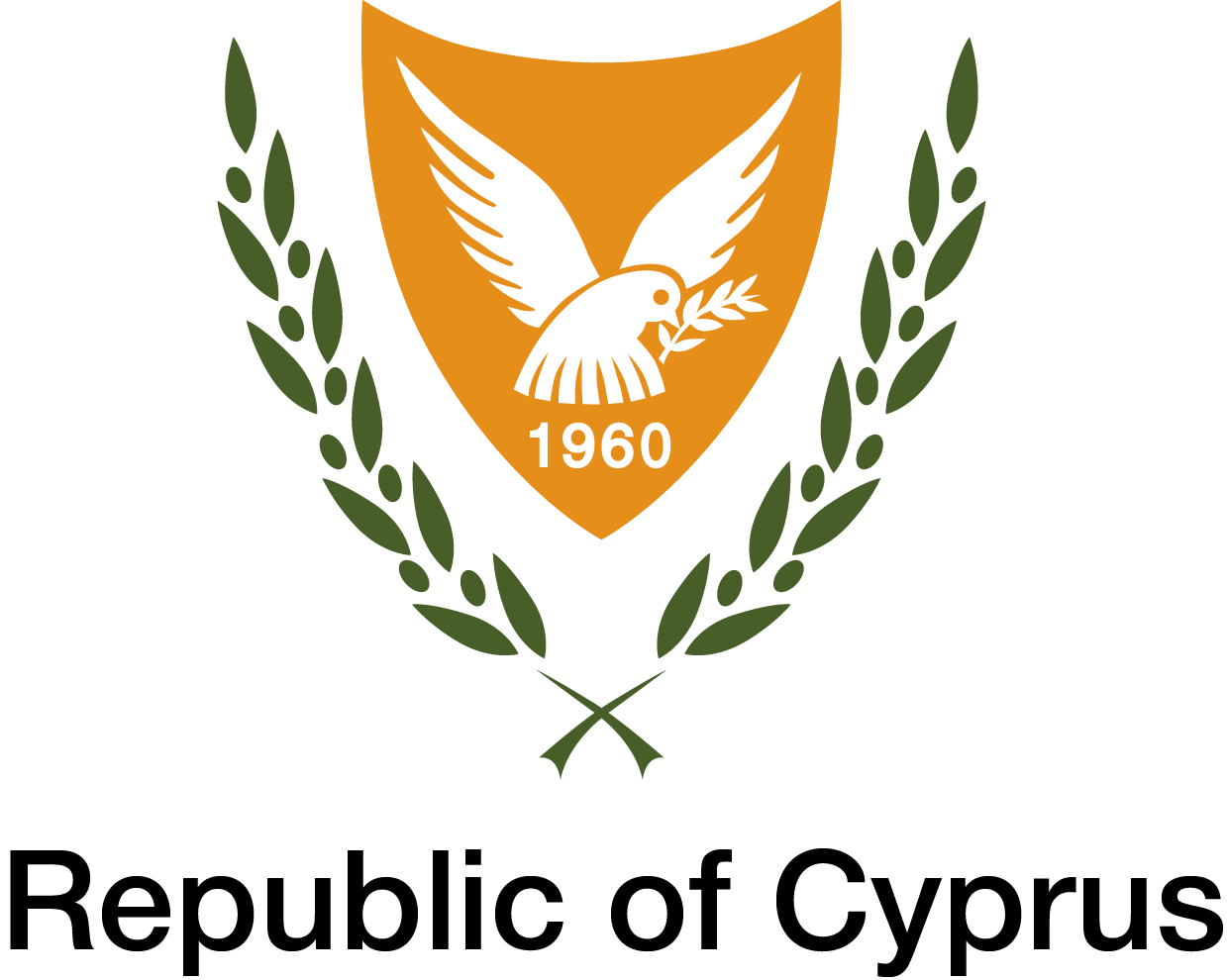
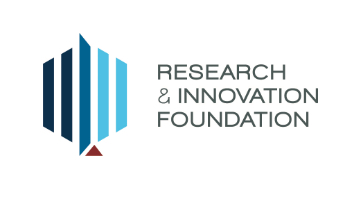

EXDCI-2
Project informationStart date: 1 March 2018 End date: 31 August 2020
|
 EXDCI-2 Project website |
Through the joint action of PRACE and ETP4HPC, EXDCI-2 mobilises the European HPC stakeholders. The project builds upon the achievements of EXDCI and will continue its participation in the support of the European HPC Ecosystem. In this page please find a summary of all HPC related activities by target audience.
FAST
Project informationStart date: 1 November 2019 End date: 31 October 2022
|
This project will engage researchers in computational sciences, to carry out research for enabling scientific applications on the supercomputers of tomorrow. The researchers, hosted under the Computation-based Science and Technology Research Center (CaSToRC) of The Cyprus Institute (CyI), will develop methodologies and algorithms suitable for simulating fundamental physics using computing technologies expected to be available in the short-term (2-5 years from now) as well as the medium term (5-10 years from now). In particular, the objectives of this project are:
To investigate the use of Quantum Computers for simulating physical systems. Early prototypes of Quantum Computers, such as those currently available by IBM and D-Wave, allow simulating simple physical systems such as the Ising model, offering valuable insights on how to map physical problems onto this novel computing technology. Simulation of such simple systems allows for the development of tools and methods also appropriate for more complex systems that may be possible to simulate on larger Quantum Computers when these become available. Access to Quantum Computers will be made available via existing collaboration with researchers at the theory group in DESY-Zeuthen and IBM.
To develop numerical methods capable of scaling to exascale supercomputers that will be available by 2022. This involves developing new multigrid iterative solvers for inverting large sparse matrices as well as efficient integration schemes such as those implemented in Markov-Chain Monte Carlo processes. These advances will enable lattice Quantum Chromodynamics (QCD) simulations on exascale supercomputers, scaling to tens of millions of processes compared to the hundreds of thousands of processes available today. Challenges will include using efficiently accelerator computing devices, such as GPUs, and enabling the applications on modern memory technologies, such as Non-Volatile Memory. Access to such technologies will be provided through existing collaborations with the Jülich Supercomputing Center (JSC) in Germany and the National Center for Supercomputing Applications (NCSA) of the University of Illinois at Urbana Champaign (UIUC) through existing collaboration.
To investigate the use of Quantum Computers for simulating physical systems. Early prototypes of Quantum Computers, such as those currently available by IBM and D-Wave, allow simulating simple physical systems such as the Ising model, offering valuable insights on how to map physical problems onto this novel computing technology. Simulation of such simple systems allows for the development of tools and methods also appropriate for more complex systems that may be possible to simulate on larger Quantum Computers when these become available. Access to Quantum Computers will be made available via existing collaboration with researchers at the theory group in DESY-Zeuthen and IBM.
The project leverages the expertise of the CaSToRC group specializing in fundamental physics simulations that has been early adopter of novel computing technologies and has played a leading role in establishing CaSToRC as the national supercomputing center of Cyprus. The activities foreseen in the project complement the research program foreseen in three H2020 projects that have been awarded to the group, namely the European Joint Doctorate “SimulaTIon in MUltiscaLe physicAl and biological sysTEms” (STIMULATE), the ERA Chair in “Modelling and Simulation for Engineering Applications”, and the 6th Implementation Phase of the “Partnership for Advanced Computing in Europe” (PRACE-6IP).
Flavor Singlets
Project informationStart date: 03 October 2011 End date: 02 October 2014
|
The simulation of the quantum field theory of strong interactions, Quantum Chromodynamics (QCD), has been a grand challenge in High Performance Computing (HPC) over the past 30 years. It was only recently that the hadronic spectrum could be computed with sufficient accuracy, at the expense of 1020 floating point operations on a BlueGene/P system at the Jülich Supercomputing Centre (JSC), in the highly acclaimed study by S. Dürr et al. In this study the full quantum fluctuations of the QCD ground-state were taken into account and quarks near physical mass were used in the simulations. The determination of physical observables with the quantum numbers of the QCD vacuum, such as the pseudoscalar η’ meson or isoscalar form factors of nucleons, is an even more demanding problem of numerical QCD.
The reason is that these observables are characterized by purely gluonic intermediate states, and hence involve the computation of closed fermionic loops with appropriate operator-insertions. Based on symmetry, the numerical values of these loop diagrams are fluctuating around zero, and the physical signals that we are after come out of correlations with other diagrams. For this reason it has been so far prohibitive to achieve results with sufficient precision. However, today’s petascale computers combined with improved algorithms promise to attain sufficient statistics and hence make progress in this area of disconnected diagrams.
To achieve this goal, the current project shall create software for multi/many-core architectures such as the upcoming Cy-Τera machine at the host and the JuRoPa cluster at JSC, the number ten machine of the current TOP500 list. The aim is twofold: firstly to achieve at least a 25% efficiency of our QCD application which is much higher than the normal 5% and, secondly, to compute the key physical observables like the η’ mass, the isoscalar nucleon form factors and the sigma term all of which require the evaluation of disconnected diagrams. This part of our work will be embedded into the novel form of a joint Simulation Laboratory (SimLab) for Particle and Nuclear Physics between the European Petascalecenter JSC and the newly established Computation-based Science and Technology Research Center (CaSToRC) at the Cyprus Institute.
FSI
Project informationStart date: 01 June 2011 End date: 31 May 2014
|
The objective of the project was to develop a new innovative software product that can be used to solve fluid-structure interaction (FSI) problems. FSI problems are problems where the flow interacts with structures like its boundaries or embedded particles, for example the flow of blood in the arteries and veins, the interaction of blood and heart valves, the flow of aqueous humor in the eyes, breathing, swallowing, movement of food in the alimentary canal. The flow affects the shape of these structures which in turn affects the flow features. FSI is an active and very challenging area of a computational fluid dynamics (CFD) research with particular relevance to biomedical engineering.
Most solvers that existed, solved the fluid and structure parts of the problem independently and iteratively, i.e. either the solid or fluid part of the equations are solved keeping the other part constant, and then the other part is solved. This process is repeated till a converged solution is obtained. This is an easy method to implement on the computer but an inefficient way of solving the problem. Also, if care is not taken, numerical inaccuracies introduced during the iterative process can accumulate producing wrong results. Most solvers use this method because it is convenient to combine two existing fluid and solid solvers.
The efficient and more accurate way to solve FSI problems is by using a solver that solves both the solid and liquid parts of the problem simultaneously. This project will develop such a software program. Finite element methods will be used to model the solid part of the problem, and finite elements or mesh-free methods will be used to model the liquid part of the problem. Coupling at the solid-liquid interface will be implemented using distributed Lagrange multipliers.
The serial source code will be further optimized using parallelization techniques. Along with traditional CPU based techniques, innovative Graphical Process Unit (GPU) based ones will also be explored. General-Purpose computation on GPUs (GPGPU) technologies are currently some of the most effective (and accessible) accelerator systems (large collections of simplified processor cores) for many applications. Cluster-based High Performance Computing (HPC) systems are employing the use of accelerators to dramatically increase the performance of suitable applications. A GPU-accelerated development cluster was in CaSToRC at the time offered 16TFlop/s of single precision performance.
GPUCW
Project informationStart date: 01 March 2013 End date: 28 February 2015
|
The general objective of the project is to enable collaboration of CaSToRC with IBM-Cyprus, as well as with the University of Cyprus (UCY) and CSCS, an institute at the forefront of deploying emerging HPC systems (first Cray XT3, XE6 and XMT2 in Europe), in order to carry out research and development in software and hardware issues related to GPU cluster management and programmability. The goal is to develop a set of open-source software tools for improving operational capabilities of GPU clusters, primarily by extending middleware tools that currently exist for CPU-only clusters, or by developing standalone, complementary software solutions when there is no pre-existing toolset.
This project aims at developing fundamental middleware for the novel hybrid clusters deployed within PRACE, with the goal to transfer advanced computer knowhow to IBM-Cyprus and to initiate research and development to ensure adoption in future hybrid clusters.
To achieve this goal, we need to identify the current deficiencies of the hybrid CPU/GPU architecture, arising from the fact that GPUs are currently available only as coprocessors to CPUs. Specifically, the general objectives are:
- To initiate the development of an expert team at IBM-Cyprus which can participate with the corresponding teams at IBM-Zurich and Germany for the production of appropriate software for GPGPU clusters
- To couple researchers in computational science at CaSToRC, which is developing a national supercomputing centre, to a major vendor of computer industry locally, to facilitate transfer of advanced computer know-how to Cyprus through research and development activities.
Group Factor Models
Project informationStart date: 01 May 2019 End date: 30 April 2021
|
Real-time monitoring of macroeconomic conditions, of the stability of financial conditions indicators and identifying sources of distress in economic institutions, are examples of the challenges economists face both in academic and policy-making institutions. This project will develop novel models, tests and tools using Group Factor models with large datasets of different sampling to provide new results in econometric theory and applications which are useful for economists and economic policy makers.
HiPOP
Project informationStart date: 01 September 2009 End date: 31 August 2011
|
The EU/US ATLANTIS project “HiPOP”, coordinated by CaSToRC, aimed at producing a Comprehensive Report on the general policies and the specific practices used by its transatlantic consortia partners and other important institutions engaged in Computational Sciences and Engineering education.
The goal was to raise public awareness on the benefits of computational sciences, attract more students in science and engineering, promote advanced simulation in these fields, carry out outreach for the importance of computational science both in education and research, and design and create an operational web platform for promoting computational sciences at schools.
HPC-LEAP
Project informationStart date: 1 April 2015 End date: 31 March 2019
|
 HPC-LEAP Project website |
The Marie Sklodowska-Curie project “HPC-LEAP” is a highly interdisciplinary European Joint Doctorate (EJD) program realized by bringing together world-leading experts in applied mathematics, high performance computing technologies, particle and nuclear physics, fluid dynamics and life sciences to appropriately train researchers in Europe to exploit high performance computing, advance science and promote innovation.
Progress in computers and algorithms in the last years has made numerical simulation and modelling a key research methodology in both academia and industry, which in turn drives exascale computing in order to maintain excellence in research and innovation. A disruptive evolution in computer technologies is required for attaining exascale performances in the coming years bringing challenges that urgently need to be addressed across science and engineering fields. Therefore, new interdisciplinary strategies are required in order to educate the next generation of scientists to address such challenges enabling them to be at the forefront of their respective research fields.
Instead of the traditional domain-specific training, integrated approaches are needed that can be best implemented by collaborative networks of universities, research institutes and industrial partners. Students will be trained in mathematical and computational concepts underpinning current and future numerical simulations in turbulent flows, computational biology and lattice Quantum Chromodynamics.
The research projects are designed to enhance collaborations and interactions across these disciplines, integrating non-academic partners, and to develop methodologies that efficiently use large-scale numerical simulations on future high performance computer systems. Students who complete this training program will be versatile to undertake highly interdisciplinary projects, well positioned to embark on a successful career in academia or the industrial sector.
Lattice QCD on GPU Architectures
Project informationStart date: 01 February 2009 End date: 31 January 2011
|
As an ab initio method, lattice QCD provides a unique window into understanding this vacuum contribution to the mass of the η′ meson. Calculation of the disconnected diagrams in lattice QCD requires the exploitation of the translational invariance of the quark propagator in order to minimise the inherent noise of the measurement due to the ultra-locality of the diagram. This requires the use of the full quark propagator, which for typical lattice volumes can require the inversion of a matrix of rank >O(106). Stochastic inversion methods are typically employed to make feasible the computational cost of this. This project efficiently combines state-of-the-art lattice QCD algorithms and stochastic techniques on graphics processing units (GPUs) in order to accurately quantify this contribution.
The calculation itself is plagued by noise derived the stochastic methods and by the gauge noise coming from the Monte Carlo integration required to calculate the expectation values. The goal of this project is to harness the computational power of GPUs and exactly calculate the disconnected diagram contributions by performing an unprecedented number of conjugate-gradient inversions. This will provide an accurate benchmark by which to measure all stochastic methods and will also explicitly separate the two sources of noise in the overall calculation, providing a means to estimate the size of the Monte Carlo ensemble required to generate a truly accurate result.
Stochastic methods involve repeated use of conjugate gradient methods that create solutions based on the matrix kernel to be inverted. The exact limit behaviour requires a minimum number of inversions identical to the rank of the Dirac matrix (lattice volume times spin/colour degrees of freedom).
To perform the computationally-intensive component of the research, we have adapted the QUDA library which is designed by Boston University for lattice QCD inversions using GPGPU technologies, tuned for the NVIDIA GT200 microarchitecture. In particular, using mixed-precision conjugate gradient routines within this library, we can achieve a performance level of nearly 100 GFlop/s.
LinkSCEEM
Project informationStart date: 1 April 2008 End date: 31 January 2010
|
 LinkSCEEM Project website |
The EU funded project “LinkSCEEM”, coordinated by CaSToRC, was within a support & coordination action call. The goal of the project was to ensure that, in the early planning and development phases of CaSToRC, the center developed strong anchors in both the European HPC infrastructure and the Eastern Mediterranean scientific communities.
This would help build scientific and technological bridges between Europe and the Middle East and narrow the digital gap between the Eastern Mediterranean and Western Europe.
The aims of the project were to engage and cultivate the Eastern Mediterranean research community, address issues of network connectivity, synchronize with the European HPC infrastructure and plan for the future.
LinkSCEEM-2
Project informationStart date: 1 September 2010 End date: 28 February 2015
|

LinkSCEEM Project website |
The FP7 infrastructure project Linking Scientific Computing in Europe and the Eastern Medi-terranean (LinkSCEEM) established a high-performance computing (HPC) ecosystem in the Eastern Mediterranean region by interlinking and coordinating regional compute resources to form an integrated e-Infrastructure.
LinkSCEEM’s overarching objective was to enable scientific research in the region by engag-ing and supporting research communities, with an initial emphasis in the fields of climate research, digital cultural heritage, and synchrotron radiation applications.
The main objectives of this project were to interlink and coordinate regional computational resources to form an integrated e-Infrastructure, as well as to provide the associated training activities and user support, engaging regional communities through networking activities such as workshops, exchange of visitors, organization of joint events, and outreach. This contribut-ed to the creation of a HPC ecosystem from the individual group cluster to the Teraflop scale machines provided by CaSToRC and Bibliotheca Alexandrina (BA), and promoted the coor-dination of practices and methodologies.
Meson properties in lattice quantum dynamics in the chiral regime
Project informationStart date: 15 October 2010 End date: 14 October 2013
|
State-of-the-art gauge configurations generated with two degenerate flavors (NF=2) of light twisted mass fermions (TMF) are already available for pion masses as small as 270 MeV and several lattices of different lattice spacings allowing the evaluation of these fundamental quantities in the chiral regime with a reliable extrapolation to the continuum limit. TMF gauge configurations, which in addition to the u and d quarks include the strange and charm quarks (NF=2+1+1), will be also employed. Generation of NF=2+1+1 gauge configurations is under way and we expect to have configurations at pion masses in the range 250 to 400 MeV. For the first time, local infrastructure being developed at the Cyprus Institute, will be used for CPU intensive computations such as the generation of gauge configurations and propagators. The project will have two phases: During the first phase we will use NF=2 TM configurations to calculate hadron masses as an introduction of the young researcher to lattice techniques. This will be followed by a s study of the internal structure of flavor non-singlet scalar mesons; In the second phase we will participate in the generation of NF=2+1+1 dynamical configurations to study the low lying meson spectrum including a determination of quark masses as well as the pion, kaon and D decay constants and form factors.
This project involves numerical and algorithmic studies, as well as analytic calculations. Access to large computers and fast algorithms are needed and the consortium proposed here has both the scientific expertise as well as access to supercomputing facilities such as the Blue Gene/P at the Jülich Supercomputing Center (JSC), currently the biggest computer in Europe, and the new machine to be acquired by the Cyprus Institute. The graduate student will be involved in all aspects of the calculation of meson masses, decay constants and form factors and will use these supercomputers.
First principles calculation of meson properties, in a regime where chiral effective theory can be reliably used to extrapolate to the physical point as proposed here, tests our theoretical understanding of the strong interactions and aids the interpretation of current experimental measurements.
The main objectives of this project were:
- To fund a graduate student at the University of Cyprus and to provide training in Elementary Particle Physics with emphasis on high performance computing
- To strengthen the research capabilities of the local institutions involved in the project
- To promote international collaboration with leading European groups of the field
- To produce results on key observables of high international impact.
NiceQuarks
Project informationStart date: 1 April 2022 End date: 31 March 2024
|
The project "Nucleon structure at the precision frontier using lattice QCD with physical up, down, strange, and charm quarks (NiceQuarks) will establish an Excellence Hub for btaining precision nucleon structure quantities via simulation of the theory of Quantum Chromodynamics (QCD). The project is aligned with experiments in the so-called precision frontier of particle physics, in which high-accuracy experiments are probing the structure of the nucleon to test the standard model, at MAMI in Mainz, at JLab, and at the upcoming Electron-lon Collider in the US. Within NiceQuarks, we will compute quantities that reveal the structure of the nucleon and the distribution of quarks and gluons therein, such as the nucleon axial, scalar, and tensor charges, the nucleon sigma-terms, moments of parton distribution functions, nucleon form factors, and nucleon generalized form factors. The novelty of NiceQuarks is in the use of simulations with quarks with masses set to their physical values and at parameters that will allow, for the first time exclusively using simulations with physical quarks, taking the continuum and infinite Volume limits. To achieve these goals, NiceQuarks foresees advancing lattice QCD simulation and analysis workflows. Of particular focus are upcoming exascale and existing pre-exascale supercomputers and in enabling the use of machine learning methods for large-scale simulations and data analyses of lattice field theories. The consortium of NiceQuarks reflects these needs, binging together experts in large-scale simulations in lattice QCD from the Cyprus Institute, researchers well versed in nucleon structure analyses from the University of Cyprus, expertise in simulation algorithms from DESY-Zeuthen, and cutting edge knowhow for using machine learning within lattice field theories from the Berlin Institute for the Foundations of Learning and Data (BEIFOLD).
NextQCD
Project informationStart date: 1 October 2019 End date: 30 September 2021
|
The project “New Physics Insights from Exascale Simulations of QCD” (NextQCD) has the general objectives: i) to develop the appropriate techniques and methodologies for simulating lattice QCD on exascale supercomputers and for analyzing the data that these will produce, and ii) use these improved techniques for accessing quantities in the precision frontier, with focus on those that impact new physics searches. In particular, within NextQCD, we will produce lattice ensembles with large physical volumes for accessing the so-called nucleon σ-terms and the related pion-nucleon (π-Ν) scattering length. The σ-terms encode the mass decomposition of the nucleon into its constituent quarks and govern its cross-section with scalar particles proposed in candidate Dark Matter theories. We aim to shed light on a prevailing discrepancy between lattice QCD results and phenomenological extractions of the σ-terms, which are obtained indirectly using experimental determinations of the π-Ν scattering lengths. To achieve this, new methods to reduce statistical uncertainties in nucleon matrix elements will be developed, as well as for increasing statistics efficiently using multigrid solvers. Advanced data analysis techniques will be incorporated to handle appropriately the hundreds of Tera-bytes of data that exascale simulations will produce. Community developed codes and numerical libraries will be developed openly within NextQCD, maximizing its impact. The σ-term calculation will be setup such that we also obtain a range of nucleon matrix elements as by-products, giving us access to the nucleon axial, tensor, and scalar charges, as well as moments of nucleon parton distributions, which are also of high interest to phenomenology.
NextQCD brings together computational scientists with excellent track record in producing high-impact physics results in lattice QCD and high-level technical expertise in advanced simulation algorithms and scientific computing. In achieving its objectives, NextQCD will establish a hub of excellence in exascale simulations across The Cyprus Institute (CyI) and the University of Cyprus (UCY) sustaining a series of successes of its participants, with impact on the broader computational science communities of Cyprus. The consortium of NextQCD includes the Jülich Supercomputing Centre (JSC), one of the largest supercomputing centers in Europe and a leading facility for the adoption of new computing technologies in computational science, as well as the Applied Computer Science group of the University of Wuppertal (UW) with members that have pioneered multigrid methods for lattice QCD. NextQCD will advance the participation of Cyprus-based researchers within the Extended Twisted Mass (ETM) collaboration, an international collaboration of over 50 scientists and one of the largest lattice QCD collaborations world-wide, ensuring the group’s extended visibility in the particle and nuclear physics communities.
NI4OS-Europe
Project informationStart date: 1 September 2019 End date: 31 August 2022
|
 NI4OS-Europe website |
National Initiatives for Open Science in Europe (NI4OS Europe), aims to be a core contributor to the European Open Science Cloud (EOSC) service portfolio, commit to EOSC governance and ensure inclusiveness on the European level for enabling global Open Science.
The European Open Science Cloud strives to offer 1.7 million European researchers and 70 million professionals in science, technology, the humanities and social sciences a virtual environment with open and seamless services for storage, management, analysis and re-use of research data, across borders and scientific disciplines by federating existing scientific data infrastructures, currently dispersed across disciplines and the EU Member States. NI4OS-Europe aims to:
- Support the development and inclusion of the national Open Science Cloud initiatives in 15 Member States and Associated Countries in the EOSC governance.
- Instill within the community the EOSC philosophy and FAIR principles for data Findability, Accessibility, Interoperability and Reusability.
- Provide technical and policy support for on-boarding of service providers into EOSC, including generic services (compute, data storage, data management), thematic services, repositories and data sets.
OPEN SESAME
Project informationStart date: 1 January 2017 End date: 31 December 2019
|
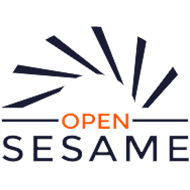 OPEN SESAME website |
The EU funded project “OPEN SESAME”, coordinated by European Light Source ESRF, will ensure optimal exploitation of the Synchrotron light for Experimental Science and Applications in the Middle East (SESAME) light source.
With this aim, OPEN SESAME has three key objectives. These are to train SESAME staff in the storage ring and beamline instrumentation technology, research techniques and administration for optimal use of a modern light source facility, to build-up human capacity in Middle East researchers to optimally exploit SESAME’s infrastructure and to train SESAME staff and its user community in public outreach and corporate communications, and to support SESAME and its stakeholders in building awareness and demonstrating its socio-economic impact to assure longer term exploitation.
PRACE
Project informationPRACE-1IP to PRACE-6IP
|
 PRACE websiteCaSToRC PRACE Activities |
The mission of PRACE (Partnership for Advanced Computing in Europe) is to enable high-impact scientific discovery and engineering research and development across all disciplines to enhance European competitiveness for the benefit of society. PRACE seeks to realise this mission by operating the European HPC infrastructure and offering world class Tier-0 and Tier-1 computing and data management resources and services through a peer review process.
PRACE also seeks to strengthen the European users of HPC in industry through various initiatives such as the SHAPE programme. PRACE also supports European researchers through training and education, support via High Level Support Teams, forward looking software solutions and other applications enabling and support activities.
CaSToRC has been an active member of PRACE since the PRACE 1st Implementation Project (PRACE-1IP) to its current PRACE-6IP.
pRMSnEDM
Project informationStart date: 1 October 2019 End date: 31 August 2022
|
This project proposes forefront research in lattice Quantum Chromodynamics (LQCD) that will:
- Elucidate the proton charge radius puzzle which emerged recently after tt muonic hydrogen experiment measured a smaller radius compared to the conventional electron-proton scattering experiments
- Measure a non-zero neutron electric dipo moment (nEDM) emerging from a CP violating term in the QCD Lagrangian, beyond the Standard Model (BSM}, providing essential input in the matter-antimatter asymmet puzzle.
In addition, it proposes the study of quantum computing algorithms for the simulation of simple models which will pave the way for lattice gauge theories in the futur Our scientific program is in line with the rich experimental activity at major laboratories such as Jlab in the US, PSI in Switzerland, MAMI in Germany and TRIUMF in Canada. For the implementation of the LQCD scientific objectives we will utilize the most powerf supercomputers in Europe and in the US in combination with novel computing architectures, such as Graphics Processing Units (GPUs) and state-of-the-art algorithms analysing twisted mass fermions configurations generated with the physical parameters of the theory accessible via our membership to the European Twisted Mass collaboration (ETMC). The project will fund a young talented scientist and a PhD student enabling them to perform highly competitive research in Cyprus in a technologically-driven field of fundamental science (LQCD) and in an emerging very promising technology called Quantum Computing delivering competencies that will help them to develop as independent researchers and prepare them for job opportunities both academia and industry. The project involves four academic institutions, two in Cyprus, one from Germany led by the spokesman of the ETMC, and one from the US providing a world-wide consortium.
The Project POST-DOC/0718/0100 is co-financed by the European Regional Development Fund and the Republic of Cyprus through the Research and Innovation Foundation.
Resulted peer review publications
- 1. Parton distribution functions of $\Delta^+$ on the lattice, Y. Chai, Y. Li, S. Xia, C. Alexandrou, K. Cichy, M. Constantinou, X. Feng, K. Hadjiyiannakou, K. Jansen, G. Koutsou, C. Liu, A. Scapellato, F. Steffens, Phys. Rev. D 102 (2020) 1, 014508, https://arxiv.org/abs/2002.12044
- 2. Model-independent determination of the nucleon charge radius from lattice QCD, C. Alexandrou, K. Hadjiyiannakou, G. Koutsou, K. Ottnad, M. Petschlies, Phys. Rev. D 101 114504, https://arxiv.org/abs/2002.06984 - D5.4
- 3. Complete flavor decomposition of the spin and momentum fraction of the proton using lattice QCD simulations at physical pion mass, C. Alexandrou, S. Bacchio, M. Constantinou, J. Finkenrath, K. Hadjiyiannakou, K. Jansen, G. Koutsou, H. Panagopoulos, G. Spanoudes, Phys. Rev. D 101 094513, https://arxiv.org/abs/2003.08486
- 4. Nucleon strange electromagnetic form factors, C. Alexandrou, S. Bacchio, M. Constantinou, J. Finkenrath, K. Hadjiyiannakou, K. Jansen, G. Koutsou, Phys. Rev. D101 (2020), 031501, http://arxiv.org/abs/arXiv:1909.10744 - D5.4
- 5. The nucleon axial, tensor and scalar charges and σ-terms in lattice QCD, C. Alexandrou, S. Bacchio, M. Constantinou, J. Finkenrath, K. Hadjiyiannakou, K.Jansen, G. Koutsou, A. Vaquero Aviles-Casco, Phys. Rev. D 102 (2020) 5, 054517, https://arxiv.org/abs/1909.00485
- 6. Pion and kaon from lattice QCD and PDF reconstruction from Mellin moments, C. Alexandrou, S. Bacchio, Ian Cloet, Martha Constantinou, K. Hadjiyiannakou, et al., Phys.Rev.D 104 (2021) 5, 054504, https://arxiv.org/abs/2104.02247
- 7. Quark flavor decomposition of the nucleon axial form factors, Y. Li, S.-C Xia, C. Alexandrou, S. Bacchio, M. Constantinou, K. Hadjiyiannakou, K.Jansen, et al., Phys.Rev.D 104 (2021) 074503, https://arxiv.org/abs/2106.13468
- 8. Neutron electric dipole moment using lattice QCD simulations at the physical point, C.Alexandrou, A. Athenodorou, K. Hadjiyiannakou and A. Todaro, Phys. Rev. D 103, 054501 (2021), arXiv: 2011.01084 - D6.3
- 9. Lattice QCD study of transverse-momentum dependent soft function, C. Alexandrou, S. Bacchio, M. Constantinou, K. Hadjiyiannakou, K.Jansen, et al., Phys.Rev.Lett. 128 (2022) 6, 062002, https://arxiv.org/abs/2106.13027
- 10. Flavor decomposition of the nucleon unpolarized, helicity, and tranversity parton distribution functions from lattice QCD simulations, C. Alexandrou, M. Constantinou, K. Hadjiyiannakou, K.Jansen, et al., Phys.Rev.D 104 (2021) 5, 054503, https://arxiv.org/abs/2106.16065
- 11. Transversity GPDs of the proton from lattice QCD, C. Alexandrou, S. Bacchio, K. Cichy, M. Constantinou, K. Hadjiyiannakou, K. Jansen, et al., Phys.Rev.D 105 (2022) 3, 034501, https://arxiv.org/pdf/2108.10789
- 12. Quark and gluon momentum fractions in the pion from Nf=2+1+1 lattice QCD, C. Alexandrou, S. Bacchio, G. Bergner, J. Finkenrath, A. Gasbarro, K. Hadjiyiannakou, et al., Phys.Rev.Lett. 127 (2021) 25, 252001, https://arxiv.org/pdf/2109.10692
- 13. Scalar, vector and tensor form factors for the pion and kaon from lattice QCD, C. Alexandrou, S. Bacchio, Ian Cloet, Martha Constantinou, J. Delmar, K. Hadjiyiannakou, et al., Phys.Rev.D 105 (2022) 5, 054502, https://arxiv.org/pdf/2111.08135
- 14. First moments of the nucleon transverse quark spin densities using lattice QCD, C. Alexandrou, S. Bacchio, P. Dimopoulos, J. Finkenrath, R. Frezzotti, K. Hadjiyiannakou, et al., submitted to Phys. Rev. D (accepted), https://arxiv.org/pdf/2202.09871
- 15. Lattice calculation of the short and intermediate time-distance hadronic vaccum polarization contributions to the muon magnetic moment using twisted-mass fermions, LC. Alexandrou, S. Bacchio, P. Dimopoulos, J. Finkenrath, R. Frezzotti, K. Hadjiyiannakou, et al., submitted to Phys. Rev. D, https://arxiv.org/abs/2206.15084
QC4LGT - Quantum Computing for Lattice Gauge Theories
Project informationStart date: 1 April 2022 End date: 31 March 2024
|
The rapid developments in quantum technology have the potential to revolutionize information processing and to become a key-enabler for studying fundamental open questions in physics. In particular, the development of the first intermediate-scale quantum computers opened up a new route to tackle currently inaccessible problems in particle physics. Capitalizing on this vast progress, QC4LGT aims at exploring efficient algorithms for simulating models in high-energy physics and beyond on quantum computers. Specifically, the focus of the project lies on developing methods to efficiently simulate gauge theories on current quantum computers in regimes inaccessible with conventional numerical methods, such as Markov chain Monte Carlo (MCMC) methods. Quantum computers do not suffer from purely numerical limitations and offer the prospect of exploring regimes which are intractable with MCMC methods. The project QC4LGT aims demonstrating this possibility using quantum electrodynamics in 2+1 dimensions as a testbed. The main novel objectives of QC4LGT are:
- The development of hybrid quantum-classical algorithms for simulating 2+1 dimensional QED in the presence of a chemical potential and a topological term, regimes which are inaccessible with conventional MCMC methods,
- The development of techniques suitable for mitigating the effects of noise, as current quantum devices still suffer from substantial levels of noise,
- The development of methods for designing efficient circuits suitable for gauge theories, in order to ensure maximal expressivity and to avoid unnecessary gate operations.
- The implementation of these algorithms and techniques on commercially available, qubit-based quantum hardware.
The team for QC4LGT consists of scientists with expertise in particle physics, lattice field theory, mathematics and quantum computing forming a collaboration accross CaSToRC, DESY Zeuthen, the Massachusetts Institute for Technology, and the University of Bath.
QUEST
Project informationStart date: 1 January 2023 End date: 31 December 2027
|
The project Quantum Computing for Excellence in Science and Technology (QUEST) will create a research group in Quantum Computing (QC) at the Computation-based Science and Technology Research Center (CaSToRC) of The Cyprus Institute (CyI) under the leadership of the ERA chair Dr. Karl Jansen of the German Electron-Synchrotron (DESY), who is also the leader of the Center for Quantum Technology Applications (CQTA) at DESY. The ERA chair holder will establish a Quantum Computing Hub as a collaborative platform for exploiting QC for applications in science and technology in partnership with CQTA. He will recruit and mentor a senior researcher to lead the team beyond the project end, offer training and education for a new generation of scientists and engineers, and pursue collaborations with other local research teams and internationally, securing further funding for sustainable development. QUEST responds to the rapid developments that demonstrate the potential of QC for breakthroughs in science and technology and the lack of leadership and critical mass of researchers in Cyprus in this field. The project aims to make Cyprus "quantum ready", closing the gap that currently exists with advanced EU countries due to the absence of expertise and infrastructure in QC, thus aligning with the objectives of the widening program in general and the ERA chair action in particular. The objectives of QUEST also align and are made feasible by the role of CaSToRC as the national high-performance center of Cyprus, namely by the mission of the center to carry out computation-based interdisciplinary research, and spread knowledge and provide support to local researchers in using computing technologies for research and innovation. QUEST will allow Cyprus to take advantage of opportunities in QC at the European level, such as by the EuroHPC Joint Undertaking and the quantum technologies flagship program, which are presently not being fully exploited.
RAISE
Project informationStart date: 01 January 2021 End date: 31 December 2023
|
 RAISE website |
The Computation-based Science and Technology Research Centre (CaSToRC) of The Cyprus Institute has become part of the recently funded European Centre of Excellence (CoE) in Exascale Computing “Research on AI- and Simulation-Based Engineering at Exascale” (RAISE), funded under the H2020-INFRAEDI-2018-2020 call. The CoE will advance the use of high performance computing (HPC) capabilities for the upcoming exascale computers in engineering applications. The involvement of CaSToRC in RAISE pertains to work packages 3 (Compute-Driven Use-Cases towards Exascale), 4 (Data-Driven Use-Cases towards Exascale), and 6 (Outreach and services). In the context of WP3, physics-informed machine and deep learning algorithms are employed in computational fluid dynamics in an effort to understand the behaviour of liquids on surfaces, with applications in the optimization of surface features for facilitating droplet transport for water harvesting, printing technologies and oil recovery, among others. Herein, “Task 3.5: AI for wetting hydrodynamics” is led by Assist. Prof. Nikos Savva. In addition, CaSToRC, through its collaboration with the Delphi consortium that is comprised of approximately 30 international companies in the geo-energy sector, will work on the optimization of seismic imaging methodologies using AI, simulation and data assimilation approaches to enhance our ability to identify subsurface hydrocarbon reservoirs (WP4). Finally, CaSToRC will be engaged in the outreach and services activities of WP6.
SciComp
Project informationStart date: 01 December 2008 End date: 30 November 2011
|
The general objectives of the project are:
- To enable a young researcher to carry independent research in a field of her interest, in the only institution in Cyprus that fosters and enables the pursuit of knowledge in the area of High Performance Computing.
- To develop novel algorithms in the field of graph partitioning to address the latest challenges of the field.
The proposed research will be carried along two directions:
- Traditional graph-partitioning algorithms can only be used to compute partitionings that simultaneously balance numerous constraints defined a priori on the vertices and optimize different objectives defined locally on the edges. The researcher will focus on developing novel algorithms for the type of problems whose characteristics change dynamically.
- The vast majority of the existing graph partitioning algorithms is driven from applications that are based on Finite Element Methods for the solution of Partial Differential Equations. A newer class of methods has recently been introduced, namely Mesh Free Methods. The young researcher will work on developing graph partitioning techniques specifically suited for this new class of Mesh Free Methods.
SIMDAS
Project informationStart date: 1 September 2017 End date: 31 August 2018
|

SIMDAS website |
The EU funded Teaming project “SIMDAS”, coordinated by CaSToRC, has the goal of upgrading CaSToRC into a Center of Excellence in Simulation and Data Science (SIMDAS) teaming it with the Forschungszentrum Jülich (FZJ) under which JSC is run. Local partners are three public institutions as holders and providers of key data, the Departments of Antiquities, and Meteorology, and the Nicosia General Hospital, and two SMEs, Hyperion Systems Engineering, and SignalGeneriX connecting the center directly to commercial applications. It is currently in Phase-1 and a comprehensive business plan for the six-year development of the center will is being prepared with a detailed research, innovation and educational roadmap, governance structure, outreach and sustainability plan.
SimEA-ERA CHAIR
Project informationStart date: 01 January 2019 End date: 31 September 2024
|
 SimEA-ERA Chair website |
The project Modeling and Simulation for Engineering Applications (SimEA) was carved to respond to the challenges and opportunities arising when advanced computing and data science are utilized to solve engineering problems. It is funded by the EU and coordinated by CaSToRC in CyI. The SimEA ERA Chair will expand the research portfolio of CaSToRC to include Computation-Based Engineering, collaborate with other research groups in Cyprus, Eastern Mediterranean and internationally, enrich the educational programs of CaSToRC and CyI and set the appropriate mechanisms to forge collaboration with Industry Partners. The project is developing a research team of outstanding researchers, led by Professor V. Harmandaris, appointed as the SimEA ERA Chair.
The research team will work on the development of mathematical and computational methodologies for complex molecular systems, with important applications in nano/bio technology. The ultimate goal is the “computer design of materials and processes” via novel algorithmic approaches and computational tools; i.e. computer engineering of complex materials. The team will pursue a program of research excellence and innovation, by applying and developing mathematical and computational methods including multiscale modeling, physics-based and/or data-driven molecular models, uncertainty quantification, and machine learning methods, integrated with High-Performance Computing, for tackling challenging problems in different application areas related to Computational Science and Engineering. Examples include a broad range of systems/materials of great scientific and technological interest, such as nanocomposites, polymers, graphene-based nanostructured materials, proteins, and biomolecular systems.
SimEA responds to these challenges and opportunities, by encompassing information technology and mathematics with material science and other scientific disciplines to advance discovery and innovation through computation. SimEA’s objectives will be attained via research on:
- Multi-scale Modelling and Simulations of Nanostructured Materials
- Data-driven Machine Learning Approaches for Modelling Across Scales
- Modelling of Biomolecular Systems for Biotechnology Applications
- Bayesian Inference for Uncertainty Quantification and Model Selection
STIMULATE
Project informationStart date: 01 June 2018 End date: 31 May 2022
|
 STIMULATE website |
Simulation alongside theory and experiment is nowadays considered an integral part of scientific discovery. As computation speeds up and new technologies and instruments improve, data generation in all fields of science is rapidly increasing.
As a consequence, researchers face new challenges: Data collection exceeds by far the capacity to validate, analyze, visualize, store, and curate the information contained. Additionally, traditional, single-scale, macroscopic physical models are becoming inadequate for the accuracy requirements of modern physical, biological and engineering applications that involve multiscale phenomena occurring over vastly different scales. Tackling these challenges will transform our approach to research potentially leading to unprecedented data-driven scientific discoveries.
The Marie Sklodowska-Curie project “STIMULATE”, coordinated by CaSToRC, extends the success of the HPC-LEAP project and will deliver an innovative interdisciplinary educational and research program in simulation and data science, which educates students to best address the challenges posed by exascale computing and intensive data applications, producing computational science professionals tactically positioned to become leaders in both academia and industry. The overall goal of STIMULATE is to deliver an innovative interdisciplinary educational and research program in simulation and data science, which educates students to best address the challenges posed by exascale computing and intensive data applications, producing computational science professionals tactically positioned to become leaders in both academia and industry.
The project proposes a rigorous network-wide training program and research projects that combine mathematical modeling and algorithms for exascale simulations and data-intensive science with applications in the fields of Computational Fluid Dynamics, Computational Biology and Particle and Nuclear Physics with focus in lattice Quantum Chromodynamics. Students will be seconded to industrial partners that will complement expertise in computer technologies, mathematical modeling and data analytics with hands-on training. Experts from eight degree-awarding institutions, three research centers and three companies are engaged in the project.
Each of the fifteen fellows of the program will obtain a single joint Ph.D. degree from three academic institutions.
VI-SEEM
Project informationStart date: 1 October 2015 End date: 30 September 2018
|
 VI-SEEM website |
The VRE EU project “VI-SEEM” aims at creating a unique Virtual Research Environment (VRE) in Southeast Europe and the Eastern Mediterranean (SEEM), in order to facilitate regional interdisciplinary collaboration, with special focus on the scientific communities of Life Sciences, Climatology and Digital Cultural Heritage.
VI-SEEM builds on the success of its predecessor e-Infrastructure projects – one of which was LinkSCEEM-2, and unifies existing e-Infrastructures into an integrated platform to better utilize synergies, for an improved service provision within a unified Virtual Research Environment to be provided to scientific communities of high impact in the combined South East Europe and Eastern Mediterranean region.
VI-SEEM will significantly leverage and strengthen the research capacities of user communities, thus improving research productivity and competitiveness on the pan-European level. Joining, sharing and exploiting the resources across the SEEM region in a common platform will ensure continuity and expansion of the available resources and services that will further propel excellence across the region.


